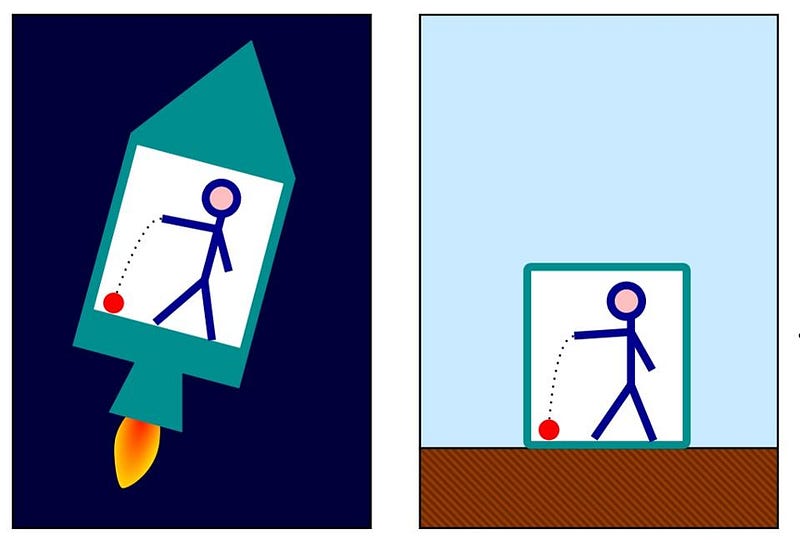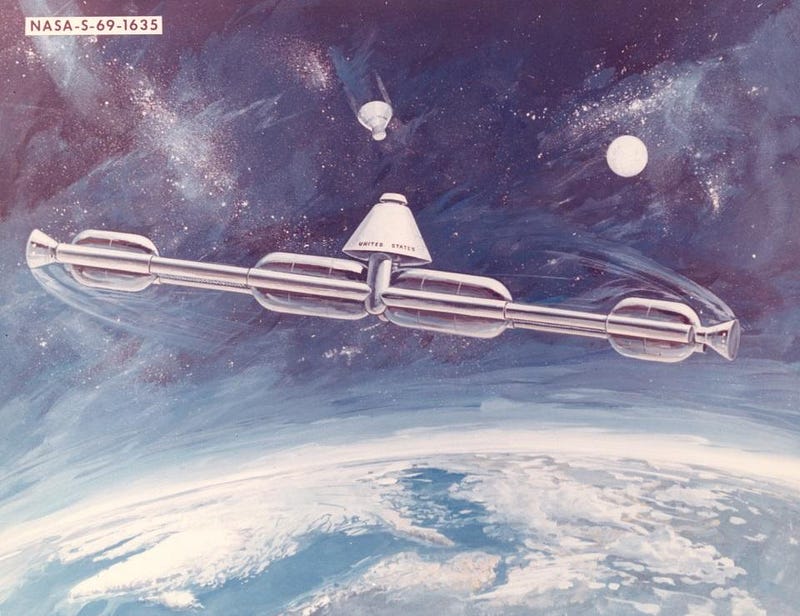Why Don’t We Have Artificial Gravity In Space?

All sorts of futuristic technologies have come true. So why are astronauts all still weightless?
Put a human being up in space, away from the gravitational bonds of the surface of the Earth, and they’ll experience weightlessness. Although all the masses in the Universe are still pulling on them gravitationally, they pull on whatever spaceship you’re in equally, too, and so you float. In TV shows and movies like Star Trek, Star Wars, Battlestar Galactica and many others, though, you always see the ship’s crewmembers stably on the “floor” of the starship, regardless of any other conditions. This would require some type of artificial gravity to be physically possible, but that’s a tall order for the laws of science as we presently know them.

For gravitation, the big lesson from Einstein is the equivalence principle: that a uniformly accelerating reference frame is indistinguishable from a gravitational field. If you were in a rocket ship, and unable to view the Universe outside of your surroundings, you’d have no way of knowing which one was going on: do you feel the downward force due to gravity, or do you feel the downward force because your rocket is accelerating in a particular direction? That was the very idea which led to General Relativity, and more than 100 years later, it’s the most correct description of gravitation and acceleration that we know of.

There’s another trick we can use if we like: we can make a spaceship rotate. Instead of a linear acceleration (like a thrust on a rocket), you can have a centripetal acceleration at work, where a person on board will feel the outer hull of a spaceship pushing them towards the center. This was used famously in 2001: A Space Odyssey, and would, if your spacecraft were large enough, be indistinguishable from a gravitational force.
But that’s absolutely it. Those three types of acceleration — gravitational, linear, and rotational — are the only ones we have that will have the effects of gravity. Which is a big, big problem aboard a spaceship.

Why? Because if you want to travel to another star system, you’ll have to accelerate your ship to get there… and you’ll have to decelerate your ship once you arrive. Unless you can shield yourself against those accelerations, catastrophe awaits you. For example, to accelerate to full impulse in Star Trek, a few percent the speed of light, would cause to to experience over 4,000 gs of acceleration even if you took an hour to get up to speed. That’s more than 100 times the acceleration necessary to prevent the blood from flowing through your body: a bad situation no matter how you spin it.

Moreover, unless you want to be effectively weightless during the long journey — subjecting yourself to horrific biological wear-and-tear like bone loss and space blindness — you’ll want some type of force exerted on your body continuously. For the other forces, this is easily doable. In electromagnetism, for example, you could place the crew inside a conducting shell, and any external electric fields get cancelled out. You could then set up two parallel plates inside, and have a constant electric field, causing charges to be “pushed” in a particular direction.
If only gravity worked the same way.

There is no such thing as a gravitational conductor, and no way to shield yourself from the gravitational force. There’s no way to set up a uniform gravitational field in a region of space, either, such as between two plates. The reason? Because unlike the electric force, which is generated by positive and negative charges, there’s only one type of gravitational “charge,” and that’s mass-and-energy. The gravitational force is always attractive, and there’s simply no way around that. Instead, you have to do the best you can with the three types of acceleration — gravitational, linear, and rotational — available to you.

The only way you’d be able to have artificial gravity, both to shield you from the effects of your ship’s acceleration and to give you a constant pull “downward” without needing to accelerate it, is if somehow you discovered a type of negative gravitational mass. All the particles and antiparticles we’ve ever discovered have a positive mass, but those are inertial masses, or the mass you talk about when you accelerate or create a particle. (That is, the min F = ma, and the m in E = mc2.) We’ve demonstrated that inertial mass and gravitational mass are the same for all the particles we know of, but we’ve never tested this sufficiently for antimatter or antiparticles.

There are experiments working to do this right now! The ALPHA experiment at CERN has created antihydrogen: a stable form of neutral antimatter, and is working to isolate it from all other particles at very low speeds. If it becomes sensitive enough, we could then measure which way it falls in a gravitational field. If it falls down, the same as normal matter, then it has positive gravitational mass, and we can’t use it to build a gravitational conductor. But if it falls up in a gravitational field, that changes everything. With a single experimental result, artificial gravity would suddenly become a physical possibility.

If antimatter has negative gravitational mass, then by setting up a ceiling of antimatter and a floor of normal matter, we could create an artificial gravity field that always pulled you down. By building a gravitationally conducting shell as the hull of our spacecraft, everyone inside would be protected from the forces of ultra-rapid acceleration which would otherwise prove lethal. And most spectacularly, humans in space would no longer suffer the negative physiological effects, from balance disorders to the atrophy of your heart muscle, that currently plague today’s astronauts. But until we discover a particle (or set of particles) with negative gravitational mass, artificial gravity will only be brought about through acceleration, no matter how clever we are.
Artificial gravity is one of 28 “Treknologies” featured in Ethan Siegel’s new book, Treknology: The Science of Star Trek from Tricorders to Warp Drive, now available wherever books are sold.
Ethan Siegel is the author of Beyond the Galaxy and Treknology. You can pre-order his third book, currently in development: the Encyclopaedia Cosmologica.




